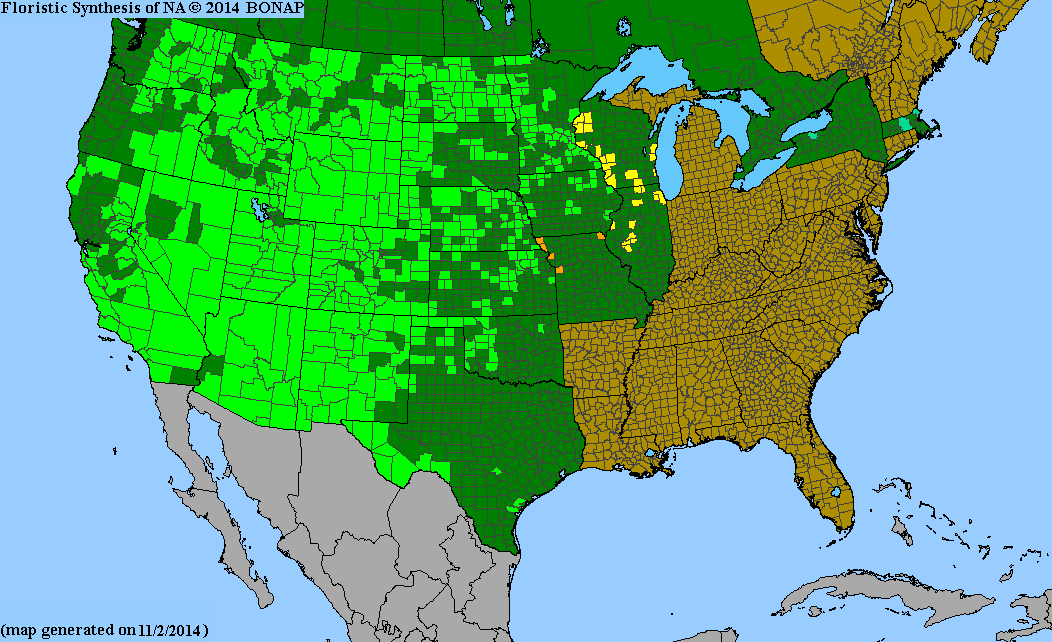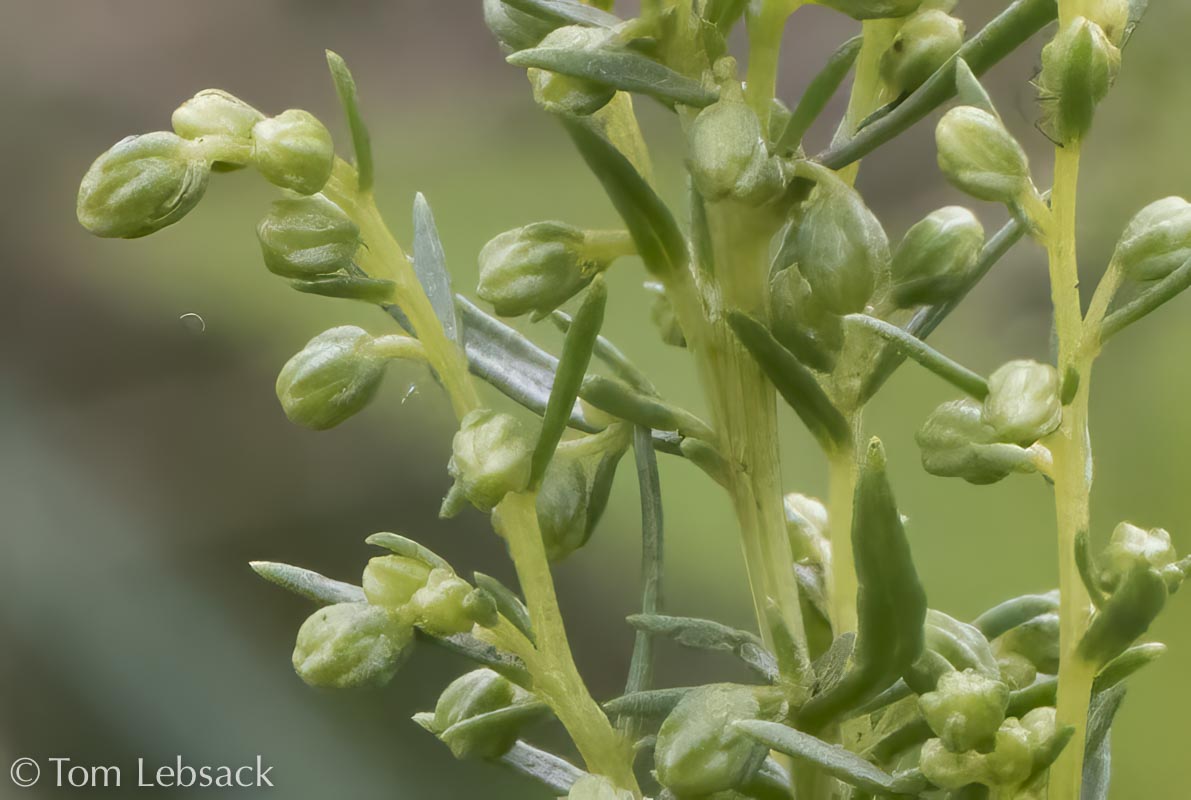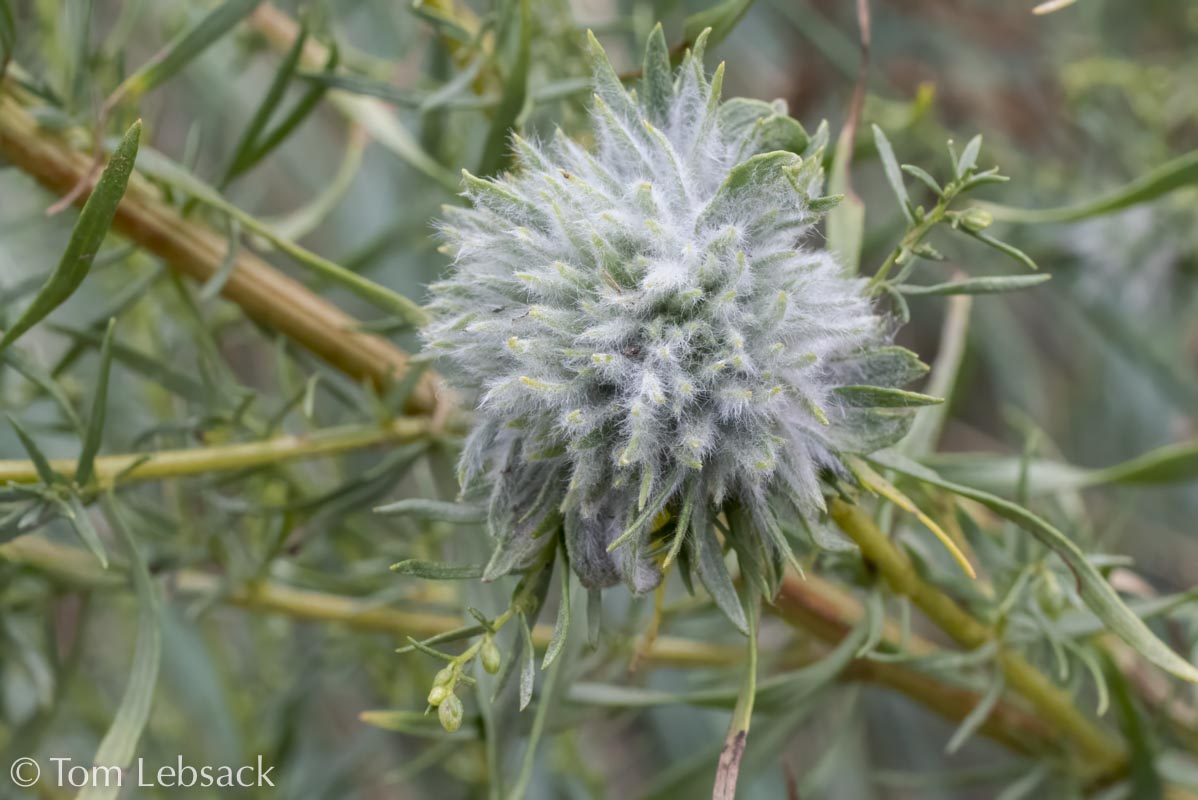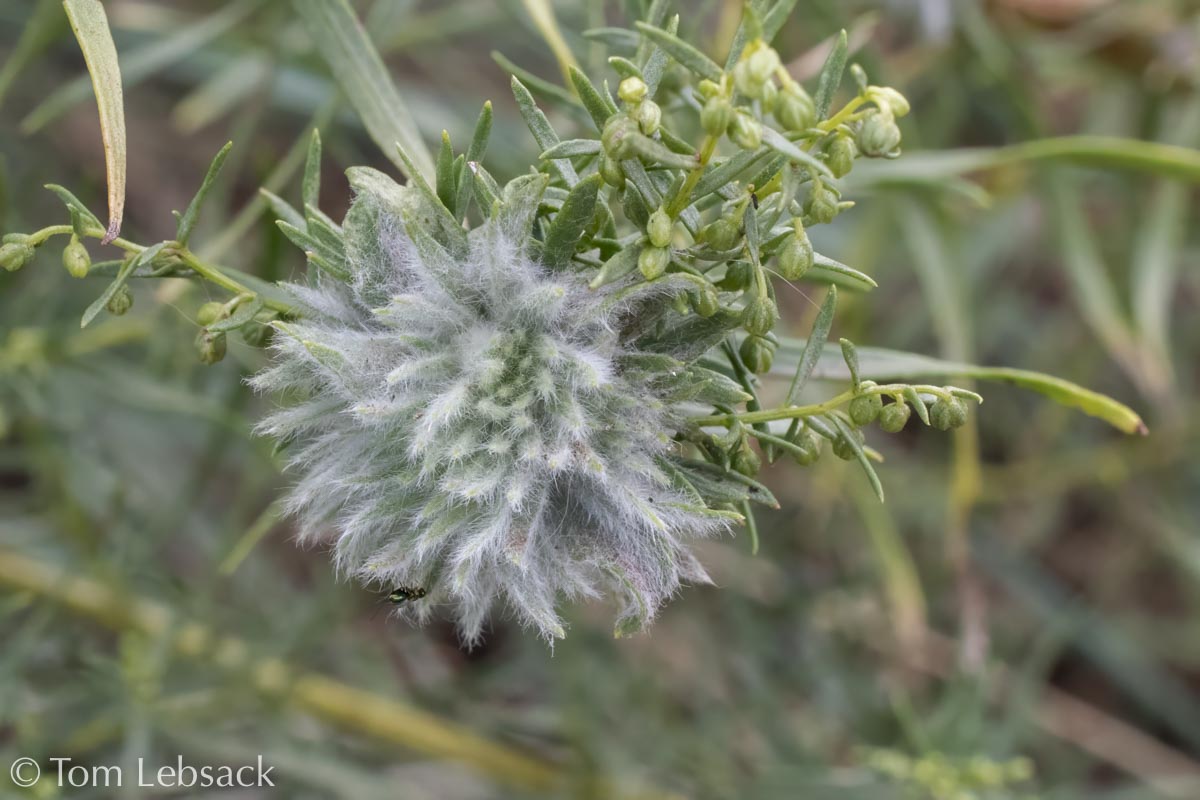Artemisia dracunculus
(Tarragon)
| Scientific Name | Artemisia dracunculus | USDA PLANTS Symbol | ARDR4 |
| Common Name | Tarragon, Dragon Sagewort | ITIS Taxonomic Serial No. | 183751 |
| Family | Asteraceae (Sunflower) | SEINet Reference |
Click Here |
| Description | Life zones and habitat: Plains to subalpine (4000 to 11500 ft.); dry hillsides, open meadows and fields, scrub, moist drainages, roadsides. Plant: Erect perennial herb or subshrub 20 to 60 inches tall; numerous green to reddish-brown stems with conspicuous striations; often strongly tarragon-scented. Leaves: Alternate, sessile blades, lowermost leaves left into 3 lanceolate-linear divisions each 3/8 to 2 inches long; upper leaves are narrow, linear to oblong with tapered bases and pointed tips, 3/8 to 2-3/8 inches long with margins that are mostly entire, sometimes irregularly lobed. Inflorescence: Many small nodding heads arranged in dense, leafy, panicles in the upper branches, 6 to 18 inches tall; round greenish yellow heads are 1/8 inch across hanging downward on short stalks. Bloom Period: July to October. References: "Flora of Colorado" by Jennifer Ackerfield, SEINet, Minnesota Wildflowers and iNaturalist. Note: Two of the photos show what appear to be parasitic Rhopalomyia galls, possibly the Woolly Bud Gall Midge Rhopalomyia medusirrasa or Cotton Gall Midge Rhopalomyia utahensis formed by the midges (flies). |
BONAP Distribution Map
Map Color Key |
Colorado Status: Native |
© Tom Lebsack 2025
Banner photo: Castilleja rhexifolia and a brewing storm over the San Juan Mountains
I try to provide accurate, up-to-date, and relevant information, but cannot guarantee the completeness or accuracy of any information presented on this website. I use authoritative references to insure high standards of accuracy and review and update the information frequently.





